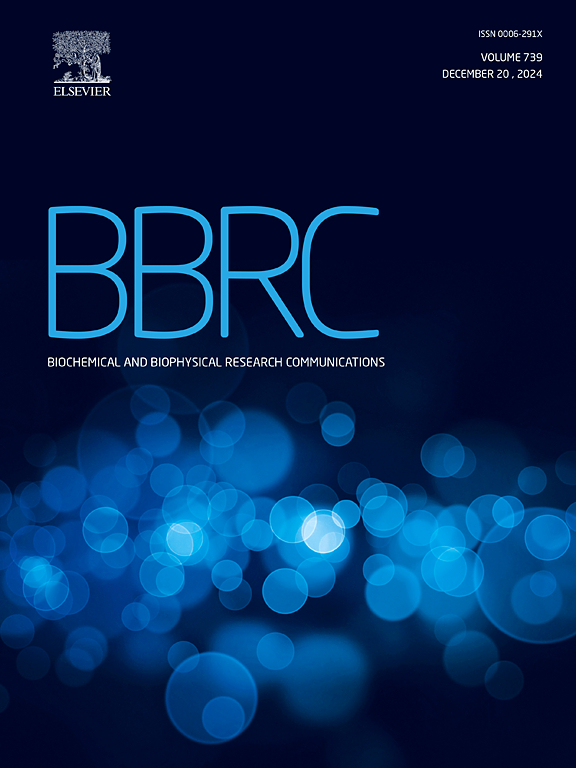探索当前 COVID-19 变体的 B 细胞表位保护和抗原性转变:分析用于治疗的尖峰抗体相互作用。
IF 2.5
3区 生物学
Q3 BIOCHEMISTRY & MOLECULAR BIOLOGY
Biochemical and biophysical research communications
Pub Date : 2024-11-04
DOI:10.1016/j.bbrc.2024.150948
引用次数: 0
摘要
SARS-CoV-2 是 COVID-19 全球大流行的罪魁祸首,它的基因发生了重大变化,产生了影响传播性、严重性和疫苗效力的各种变体。研究方法包括评估世卫组织指定的 SARS-CoV-2 变异体,即 "关注变异体"(VOIs)和 "监测变异体"(VUMs)。包括 G446S、K417N、T478K、E484A、N501Y 和 Y505H 在内的几个值得注意的变异在所有这些变异中表现出强烈的趋同进化模式,尤其是在尖峰蛋白的抗原位点上。构象表位图谱和抗原性转移分析揭示了表位变化,并对这些变化进行了比较,以达到治疗目的。VUMs BA.2.86 和 XBB.2.3 显示了显著的抗原性变化和表位动态变化,与高均方根偏差值和表位扩展或收缩相关。在所有变体中,非同义突变占主导地位,这表明功能变化会影响传播性和免疫逃避。VOIs XBB.1.5、BA.2.86 和 CH.1.1 显示出较高的可溶解表面积和回转半径,表明结构扩展和表位可用性增加。相比之下,稳定的 VOI EG.5.1 显示出最小的结构变化和适度的表位扩展。我们评估了两类抗体中和 SARS-CoV-2 变体的效果。一类抗体CC12.1和P4A1,以及二类抗体CV07-250、P5A-2G9和MW05在多种变异体中显示出很强的结合力,表明它们具有广泛的中和能力。具体来说,P4A1 与 EG.5 和 EG.5.1 的亲和力最高,而 MW05 与 XBB.1.5、CH.1.1 和 XBB.2.3 的结合力最强,突显了它们强大的中和潜力。这项研究旨在阐明不断进化的 SARS-CoV-2 株系的表位变异,为开发有针对性的干预措施以应对当前病毒带来的挑战提供重要见解。本文章由计算机程序翻译,如有差异,请以英文原文为准。
Exploring B-cell epitope conservation and antigenicity shift in current COVID-19 variants: Analyzing spike-antibody interactions for therapeutic uses
SARS-CoV-2, responsible for the global COVID-19 pandemic, has undergone significant genetic changes, leading to various variants impacting transmissibility, severity, and vaccine efficacy. The methodology involved evaluating SARS-CoV-2 variants designated by WHO as Variants of Interest (VOIs) and Variants Under Monitoring (VUMs). Several noteworthy mutations including G446S, K417N, T478K, E484A, N501Y, and Y505H exhibit a strong pattern of convergent evolution across all these variants, particularly at antigenic sites within the spike protein. Conformational epitopes mapping and antigenicity shift analyses implicated epitope changes which were compared for therapeutic purposes. VUMs BA.2.86 and XBB.2.3 show significant antigenicity changes and epitope dynamics, correlating with high root mean square deviation values and epitope expansions or contractions. Nonsynonymous mutations are predominant in all variants, suggesting functional changes affecting transmissibility and immune evasion. VOIs XBB.1.5, BA.2.86, and CH.1.1 show high solvent-accessible surface area and radius of gyration, indicating structural expansion and increased epitope availability. In contrast, stable VOI EG.5.1 displays minimal structural changes and moderate epitope expansions. We evaluated two classes of antibodies for their effectiveness in neutralizing SARS-CoV-2 variants. Antibodies CC12.1 and P4A1 from Class I, alongside CV07-250, P5A-2G9, and MW05 from Class II, display strong binding across multiple variants, indicating broad neutralizing capabilities. Specifically, P4A1 shows the highest affinity for EG.5 and EG.5.1, while MW05 exhibits the strongest binding to XBB.1.5, CH.1.1, and XBB.2.3, highlighting their potent neutralization potential. This study aims to elucidate epitope variations in evolving SARS-CoV-2 strains, offering critical insights for developing targeted interventions against current challenges posed by the virus.
求助全文
通过发布文献求助,成功后即可免费获取论文全文。
去求助
来源期刊
CiteScore
6.10
自引率
0.00%
发文量
1400
审稿时长
14 days
期刊介绍:
Biochemical and Biophysical Research Communications is the premier international journal devoted to the very rapid dissemination of timely and significant experimental results in diverse fields of biological research. The development of the "Breakthroughs and Views" section brings the minireview format to the journal, and issues often contain collections of special interest manuscripts. BBRC is published weekly (52 issues/year).Research Areas now include: Biochemistry; biophysics; cell biology; developmental biology; immunology
; molecular biology; neurobiology; plant biology and proteomics

 求助内容:
求助内容: 应助结果提醒方式:
应助结果提醒方式:


